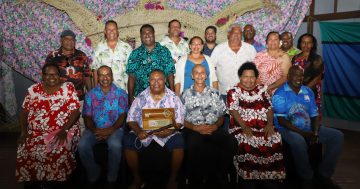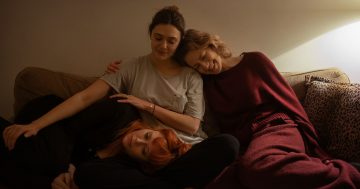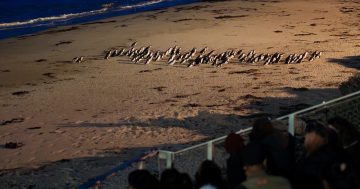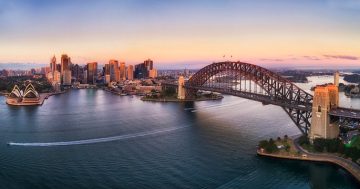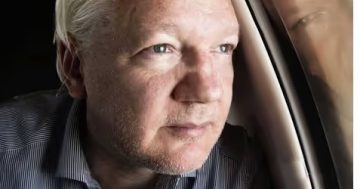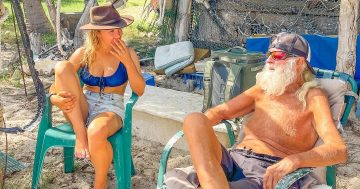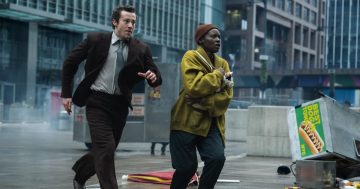Reviewed by Robert Goodman.
By NK Jemisin, Orbit, $32.99.
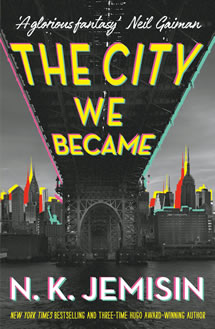 NK Jemisin has come off her three-for-three Hugo wins for the Broken Earth trilogy with something completely different. The City We Became firmly puts the urban into urban fantasy, taking as its setting, and in some ways its main character, the city of New York. It is a wild, comic, scary, insightful, sometimes pointed ride through one of the greatest cities in world as it’s caught in the act of understanding itself. As the prologue makes clear:
NK Jemisin has come off her three-for-three Hugo wins for the Broken Earth trilogy with something completely different. The City We Became firmly puts the urban into urban fantasy, taking as its setting, and in some ways its main character, the city of New York. It is a wild, comic, scary, insightful, sometimes pointed ride through one of the greatest cities in world as it’s caught in the act of understanding itself. As the prologue makes clear:
This is the lesson: Great cities are like any other living things, being born and maturing and wearying and dying in their turn.
The prologue recounts the violent birth of the city of New York as a living entity. Violent because, like many emergences in nature, there are predators ready to pounce. When a city is “born” in this way one inhabitant becomes the avatar for the living city. The young man who becomes the avatar of New York manages to fight off the incursion – giant tentacles that destroy the Williamsburg Bridge – but is injured and spirited away to recover. But the battle is far from over, the enemy remains, tentacular remnants that start to spread through the city. Luckily for New York as a whole, at the time of its traumatic birth, avatars of the five boroughs (Manhattan, Queens, the Bronx, Brooklyn and Staten Island) are also created. Only most of the people who become these avatars do not know what they are or what their purpose is, making them potentially easy prey to their enemy, represented in human form by a character who they come to call the Woman in White.
The City We Became is a love letter to New York. Not just Manhattan, the part that most readers would be familiar with, but the whole of the city, from this:
‘The Bronx, Queens, Brooklyn, Staten Island. That’s the official city, even though Long Island’s actually the same island as Brooklyn and Queens are on. Yonkers managed to keep from getting counted as part of the city; Staten Island tried to get away and lost…
‘They think Manhattan is the centre of everything when most of the city population is actually in the boroughs… So, lesson one of New York: what people think about us isn’t what we actually are.’
… to this:
He’s been here only a day, and already he’s met so many vividly interesting people, seen so much beautiful strangeness. He wants to protect a city that produces such experiences. He wants to help it grow stronger.
This is a quest novel crossed with a team-up story. The avatars for the five boroughs have to find each other and unite to find the missing, guiding spirit of New York. But each of them has a personality that represents the spirit of their neighbourhoods, so they do not find it easy to get along:
‘So we’re looking for a hardworking non-techie in Queens and somebody creative but with an attitude in the Bronx?… What about –’ He taps Staten Island on her phone.
Brooklyn’s lips purse a little, more in disapproval then contemplation. ‘That one will be a small-town thinker, even though they’re part of the biggest American city. They don’t want to be a part of New York there, remember. And they won’t let you forget it.’
While each of these characters is a ‘representative’ of their borough, they are also finely drawn and engaging in their own right. Like New York itself they are wildly diverse – physically, culturally, attitudinally and sexually – as are their friends and families, many of whom end up being involved in the fight in some way. The exception to this is Aislyn, the avatar of Staten Island, who epitomises a more racist, xenophobic, insular New Yorker.
As one character points out, the idea of avatars as representatives of more diffuse spirits is a very Eastern approach:
‘Real gods aren’t what most of you Christians think of as gods. Gods are people. Sometimes dead people, sometimes alive. Sometimes never lived… They do jobs – bring fortune, look after people, make sure the world works as it should. They fall in love. Have babies. Fight. Die. It’s duty. It’s normal.’
But back to the plot. New York is not the first world city to achieve this kind of sentience (others mentioned are Sao Paolo, London and Hong Kong) and it turns out that most city births in the past have been easier, the enemy having been seen off fairly quickly. But it soon turns out that the enemy has been preparing, and if it succeeds in New York, will create a potential danger to the whole world. And that preparation means that the enemy always seems to be one step ahead of the avatars even as they find their power and stymie her. That enemy uses the city against itself – promoting forces inimical to the diversity that the boroughs represent including racists, white male-rights activists, homophobes. In taking this approach, Jemisin effectively deploys Lovecraftian tropes (mind control, plenty of tentacles, multiple realities) and turns them back on their racist, white-supremacist creator and the beliefs that he championed. She makes the type of xenophobic mindset that Lovecraft promoted the ultimate enemy of the flourishing of New York:
Now… [Bronca]’s got to worry about that and some dude stalking her relatives from his mother’s basement, and kids bombarding her with death threats because it makes them feel like part of the (terrorist) gang, and a troll farm in Russia using the Centre as the next cause célèbre to whip up Nazis. All the people who really are a threat to the country; somehow they’ve been convinced to do its dirty work, more or less for free. She would admire it if it wasn’t so horrific.
But at the same time the novel channels some classic horror vibes with otherworldy tentacle creatures preying on the unsuspecting:
In the pool, the other boy has just stood up on the grayish-white bottom – which close up, is not just grayish white but mottled, and some of it is scarred, because it is skin not plastic or earth. And now tendrils of that grayness have whipped up from the bottom of the pool to wrap themselves around the boy’s legs.
The City We Became is a joyous celebration of New York, its diversity and what makes it great. But along the way Jemisin establishes a much bigger canvas. Avatars from a couple of other cities make an appearance, and a convocation of world cities is in the offing to try and counterthe rising threat. So while this book could stand alone, Jemisin has planted the seeds of a larger universe with greater existential threats to be explored. And it will be no surprise if The City We Became sees Jemisin featuring in the major science fiction and fantasy awards again this year.
This review first appeared in Newtown Review of Books.
This and 500 more reviews can be found at www.pilebythebed.com.



